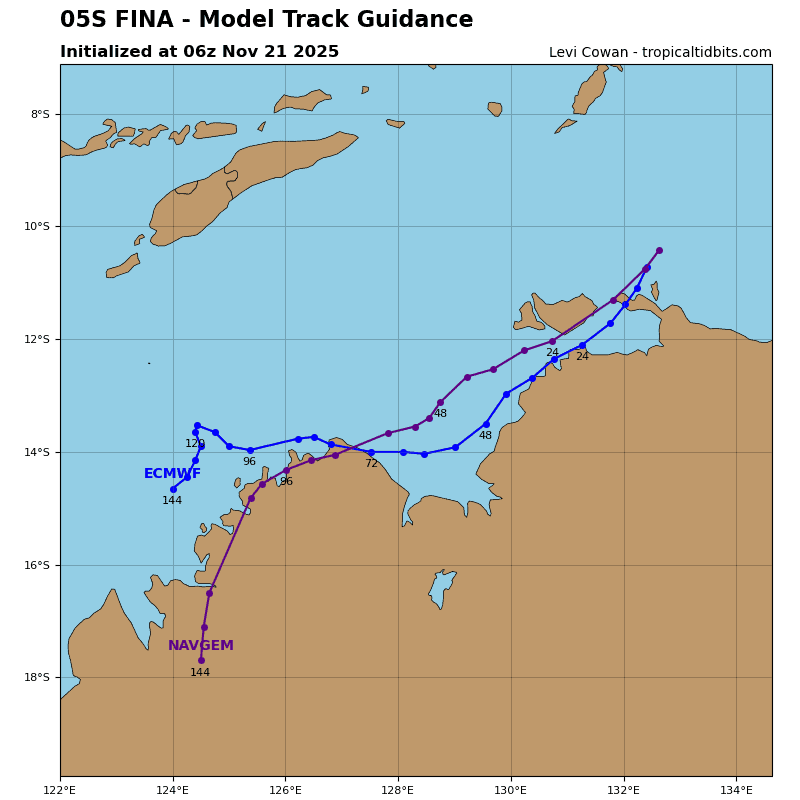Current Snapshot
For all the latest updates visit: DisasterAWARE
By PDC’s Senior Weather
Specialist Glenn James

The Pacific Disaster Center’s (PDC Global) Monday, January 15, 2024, Tropical Cyclone Activity Report…for the Pacific Ocean, the Indian Ocean, and adjacent Seas
Current Tropical Cyclones:
Tropical Cyclone 05S (Belal)…is located approximately 123 NM south-southeast of Port Louis, Mauritiu
Tropical Cyclone 06S…is located approximately 240 NM northwest of the Cocos Islands
Northeast Pacific Ocean:
The North Pacific hurricane season officially ended on November 30, 2023. Routine issuance of the Tropical Weather Outlook will resume on May 15, 2024. During the off-season, Special Tropical Weather Outlooks will be issued as conditions warrant.
The eastern Pacific basin hurricane season was above normal, with 17 named storms, of which 10 were hurricanes and eight of those major hurricanes.
From August 16 to 21, Tropical Storm Hilary brought widespread heavy rainfall and flooding to Southern California, with some areas receiving up to 600% of their normal August rainfall. Hilary resulted in the first ever issuance of Tropical Storm Watches and Warnings for the Southern California coastline by NOAA’s National Hurricane Center. In addition, the Center distributed key hazard focused messages for Hilary in Spanish through the agency’s new language translation project.
Hurricane Otis made landfall near Acapulco, Mexico, on October 25 as a category-5 hurricane, with sustained winds of 165 mph. Otis holds the record as the strongest land falling hurricane in the eastern Pacific, after undergoing rapid intensification in which wind speeds increased by 115 mph in 24 hours.
Central North Pacific:
The central North Pacific hurricane season officially ended on November 30, 2023. Routine issuance of the Tropical Weather Outlook will resume on June 1, 2024. During the off-season, Special Tropical Weather Outlooks will be issued as conditions warrant.
The central Pacific basin had a near-normal season with four tropical systems traversing the basin.
Hurricane Dora, a category-4 storm, passed south of Hawaii in early August, marking the first major hurricane in the central Pacific basin since 2020. The strong gradient between a high pressure system to the north and Dora to the south was a contributing factor to the wind-driven, fast-moving wildfires in Hawaii.
Western Pacific, Indian Ocean and adjacent Seas:
South Indian Ocean…
Tropical Cyclone 05S (Belal)
According to the JTWC warning number 8, sustained winds are 65 knots…with gusts to near 80 knots.
As indicated on animated radar imagery, tropical cyclone 05S tracked just north of La Reunion then dipped abruptly southeastward along the east coast of the island. Hourly surface observations from Saint Denis (61980) indicated maximum sustained winds of 56 knots with a minimum sea level pressure value of 977.8 millibars.
Animated enhanced infrared satellite imagery depicts rapid weakening of core convection, with warming cloud top temperatures. A microwave image reveals deep convective banding primarily over the eastern semicircle due to upper-level subtropical westerlies and dry air entrainment, with shallow banding exposed over the western semicircle.
TC 05S is forecast to track east-southeastward to eastward through 48 hours along the southern periphery of the aforementioned steering ridge. However, the system is expected to slow significantly after 48 hours, as the subtropical ridge builds west and east of the system effectively blocking eastward progression and producing a more erratic, quasi-stationary track motion.
In general, TC 05S will weaken steadily through the forecast period due to dry air entrainment and persistent vertical wind shear (20 to 30 knots).
Tropical Cyclone 06S
According to the JTWC warning number 2, sustained winds are 40 knots…with gusts to near 50 knots.
Animated multi-spectral satellite imagery depicts a consolidating low-level circulation with improved convective banding over the western semicircle and flaring core convection obscuring the center. A microwave image reflects the improved organization and reveals a compact core with deep convective banding wrapping from the western quadrant into the northeast quadrant. The microwave image shows shallow banding over the southern semicircle, which wraps into a defined low-level circulation center.
Tropical cyclone 06S is tracking slowly and erratically within a weak steering environment but is expected to turn eastward to southeastward through tau 36 along the southern periphery of the weak ridge. as TC 06S becomes better aligned over the next day, it is expected to intensify slowly.
After 24 hours, the system will intensify at a faster rate with improving poleward outflow into a sharp upper-level trough and associated jet. Consequently, the system will peak at 65 knots by 72 hours. Through 72 hours, the system will track slowly southward along an extension of the steering ridge positioned to the east.
After 72 hours, the system is expected to stall and become quasi-stationary as it weakens rapidly due to increasing easterly vertical wind shear (20-35 knots) and significant dry air entrainment.









